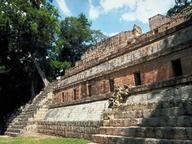Quiz Answer Key and Fun Facts
1. When Herculaneum was excavated, a villa was discovered that held over 1,788 papyri ostensibly belonging to Piso. What is the name of this find ?
2. While excavating at Crete, Sir Arthur Evans discovered this palace, which included a labyrinth.
3. What is the present day name of the actual site of Troy found by Schliemann?
4. Sir Arthur Evans discovered clay tablets inscribed with symbols that were eventually identified as the Minoan language. What is this earliest of Greek scripts called today?
5. What famous site was opened for the first time on November 26, 1922 in Egypt?
6. This artifact allowed Champollion to succeed in deciphering ancient Egyptian hieroglyphics.
7. This queen of ancient Egypt was a great beauty. We know this because of the existence of a bust of her made from life. Name this beautiful queen.
8. This slab of basalt has been referred to as the 'First historical document in the world'. It is inscribed with a figure assumed to be a pre-dynastic king of Egypt.
9. The excavation of this ancient city astounded scientists because of its seemingly modern gridded streets and sophisticated sewer system. It is located in today's Pakistan.
10. Name the German archaeologist and art historian whose birthday is celebrated by others each December 9 because he developed a scientific method for dealing with excavations and their finds.
11. This bilingual inscription substantiated Champollion's work on Ancient Egyptian Hieroglyphics and helped confirm his achievement.
12. This is the name of the early wedge shaped writing of Sumer.
13. The oldest annals of ancient Egypt are found on this artifact.
14. This is one of three Mayan documents from pre-conquistador days.
15. This Neolithic site is located in Turkey and may date from 6000 B.C.E. Many consider it the first actual city.
Source: Author
Helene61
This quiz was reviewed by FunTrivia editor
bloomsby before going online.
Any errors found in FunTrivia content are routinely corrected through our feedback system.

